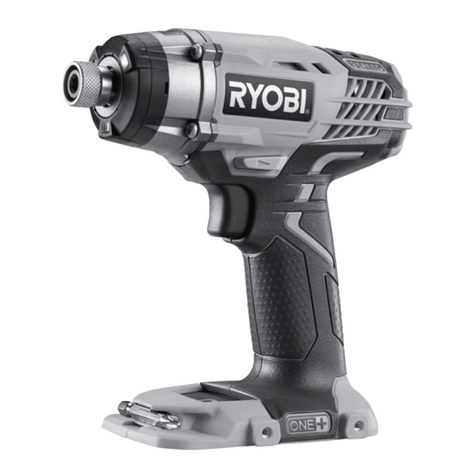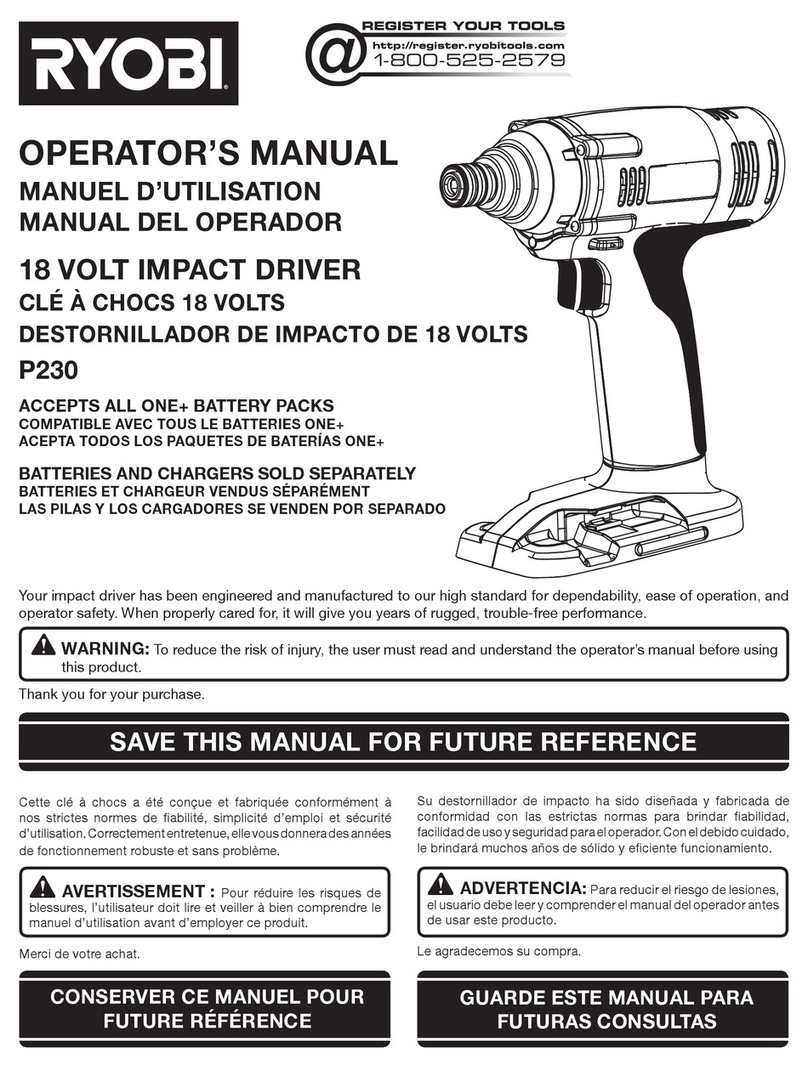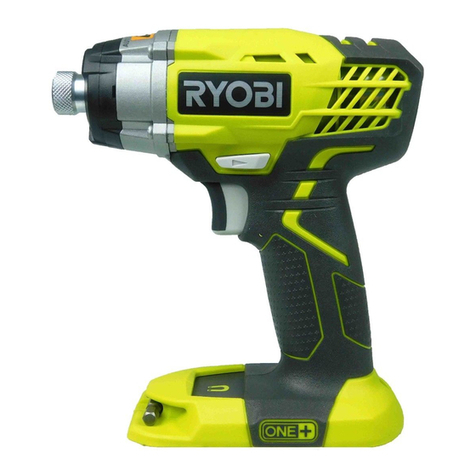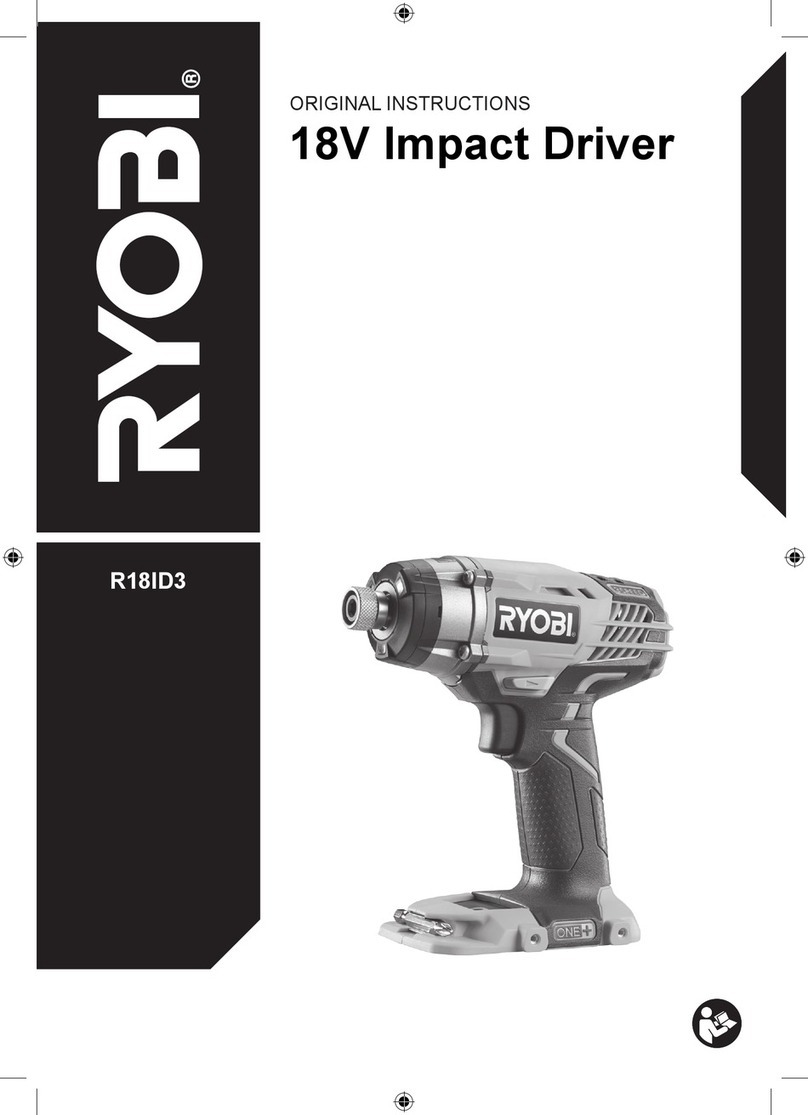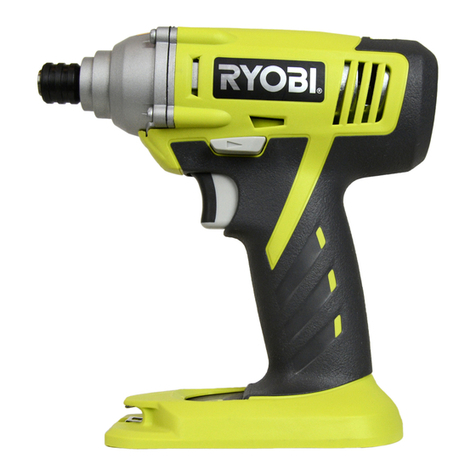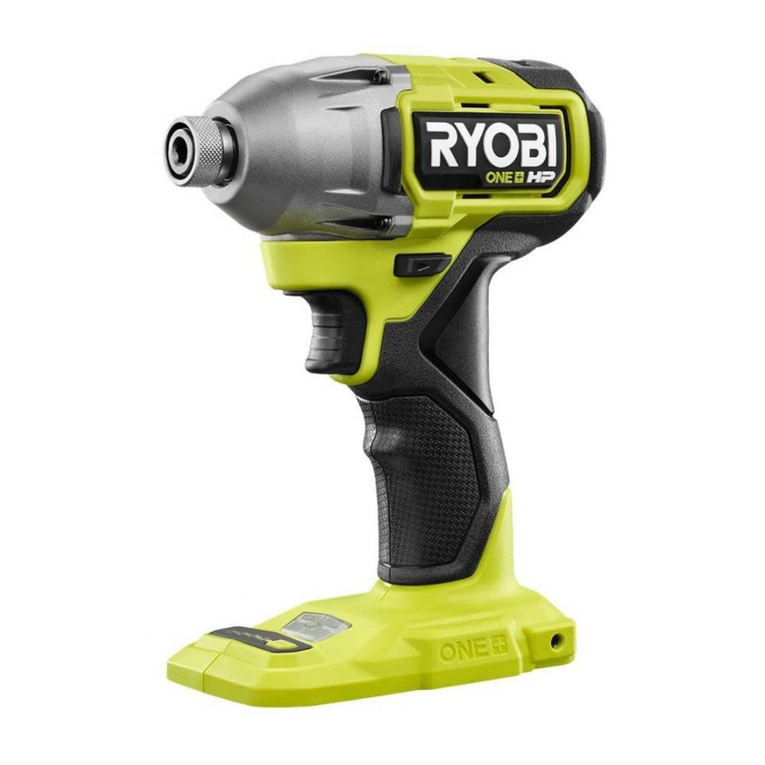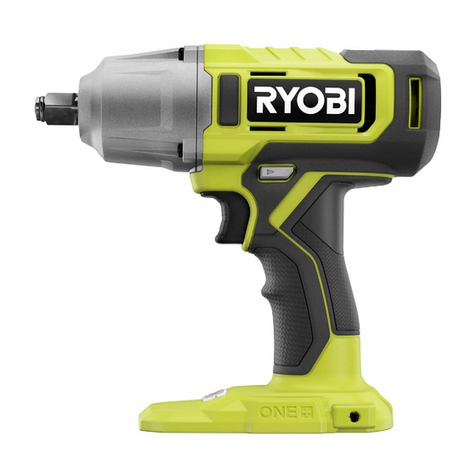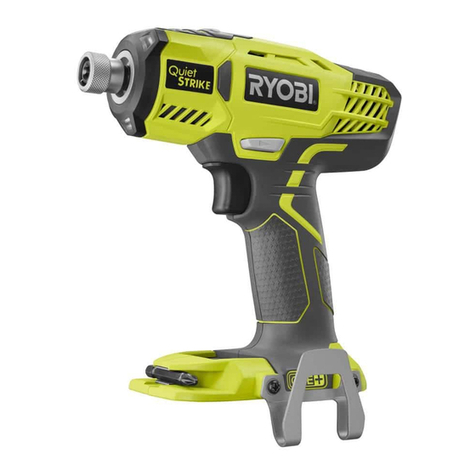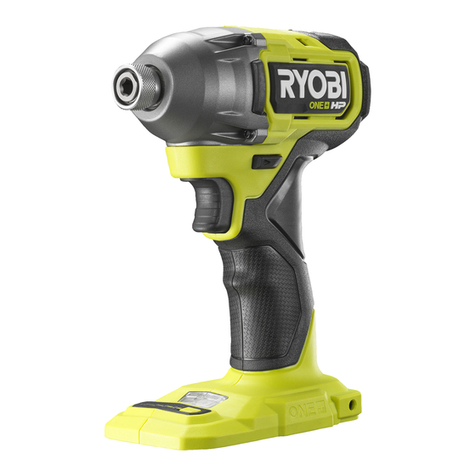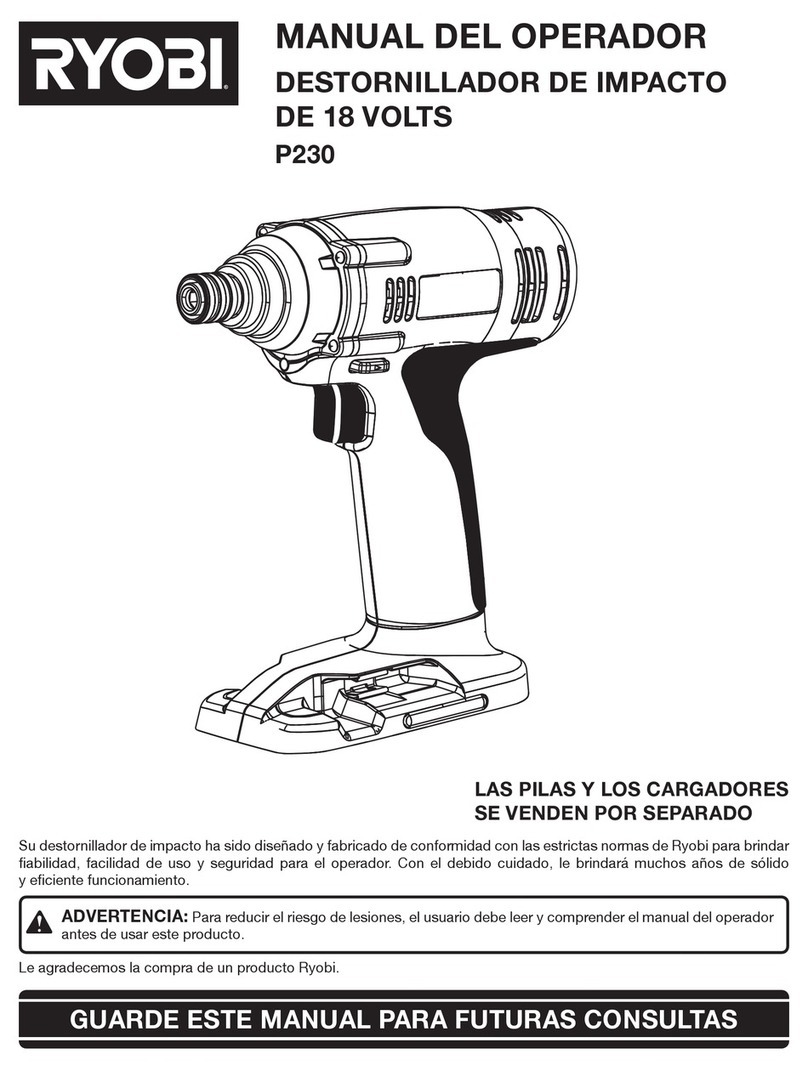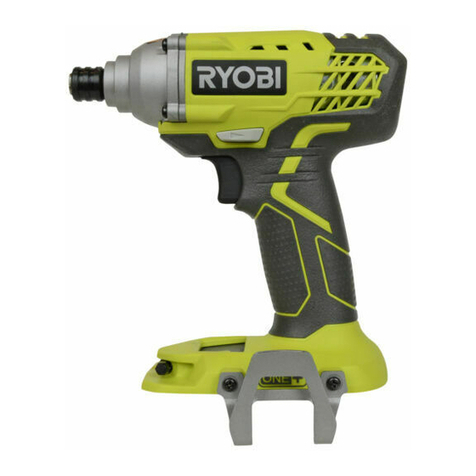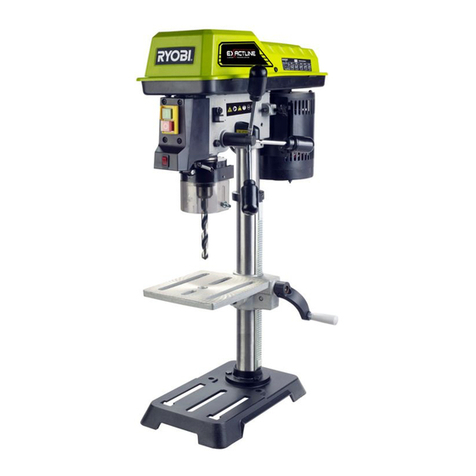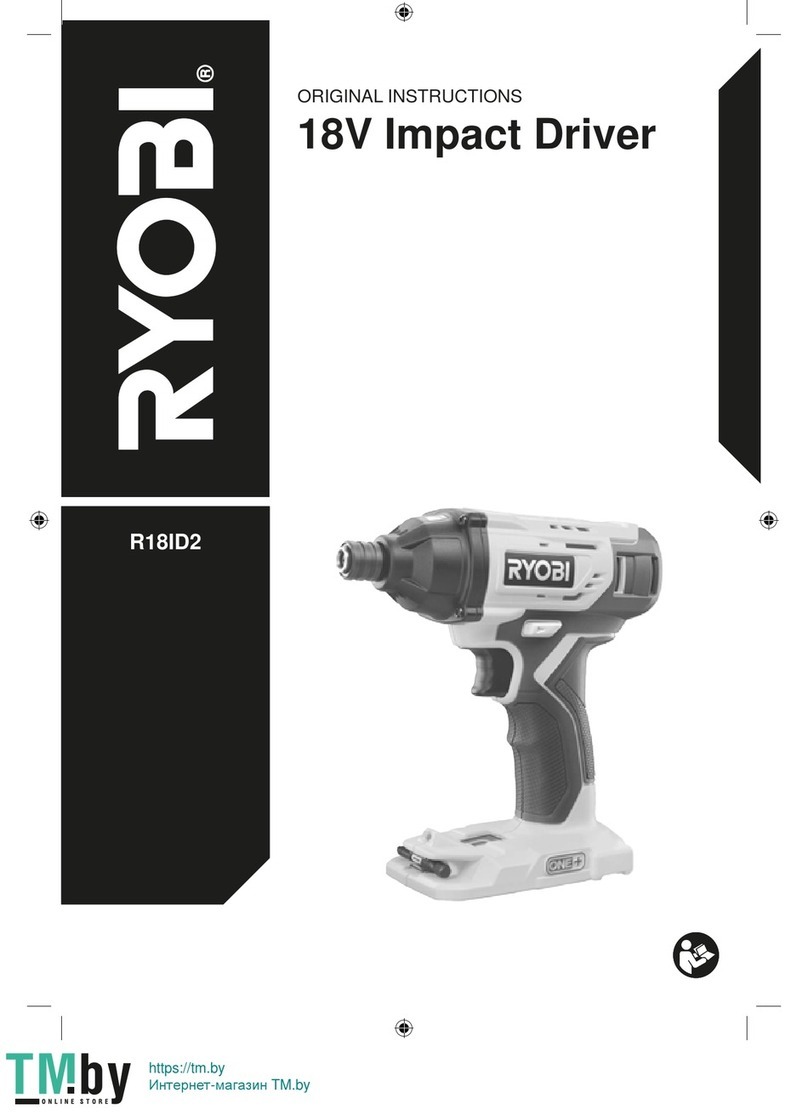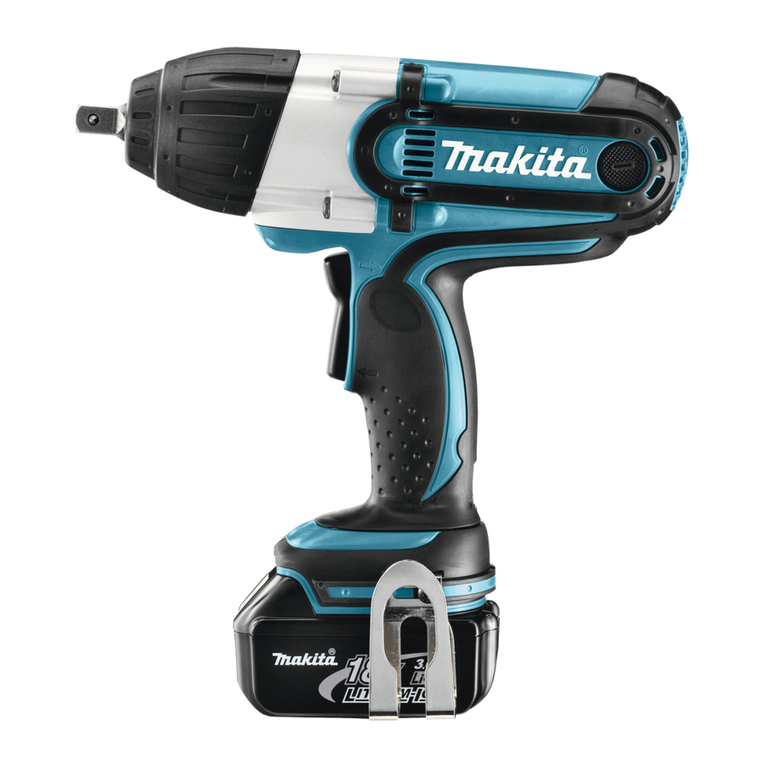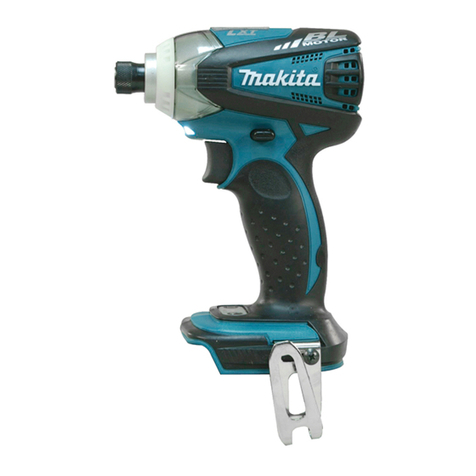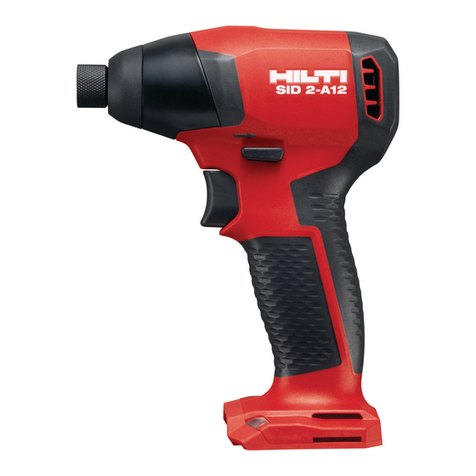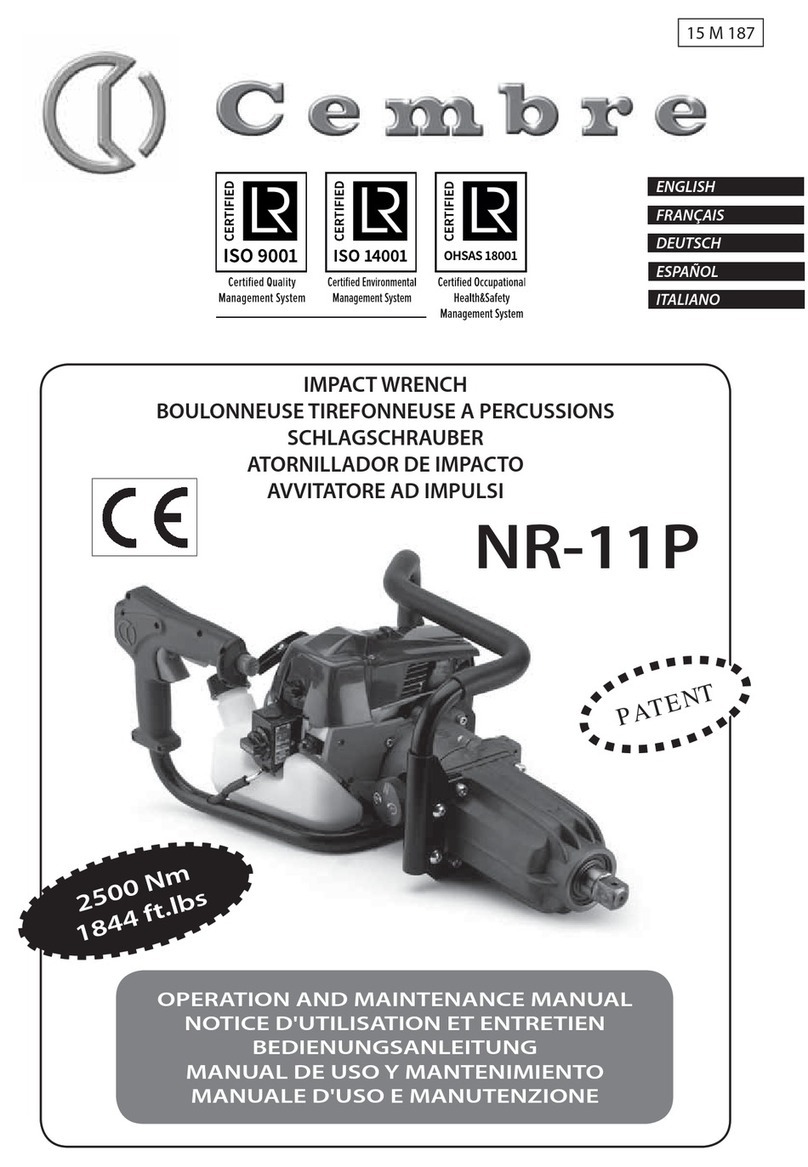
2
English
APPLICATIONS
The tools has durable twin-hammer impact wrench
mechanism, pressure-feed lubrication, adjustable power
regulator, variable speed, high torque, front exhaust, sheer
power and performance features to tackle the toughest
jobs with ease and proven durability and economy. The
product is used as wrench, any other use is forbidden.
AIR SUPPLY AND OPERATION
■Ensure air valve (or trigger) is in the “off” position
before connecting to the air supply.
■Required air pressure of 90psi, and an air flow
according to specification.
■Connect the tool to the air hose.
■Press the trigger to operate the tool.
■DO NOT use any additional force upon the tool.
■DO NOT allow wrench to free run for an extended
period of time as this will shorten its life.
■Release the start and stop device in the case of an
interruption of the energy supply.
■Disconnect tools from the energy source before
changing accessories or making adjustments.
■Place the socket over the subject nut and depress the
trigger to operate the tool.
■To change direction push the button at the top of the
handle. Direction of "R" for reverse and “F” for forward.
■The flow of air may be regulated by adjusting flow
valve at the base of the handle.
WARNING
Ensure the air supply is clean and does not exceed
90psi while operating the tool. Too high an air pressure
and unclean air will shorten the product life due to
excessive wear and may be dangerous, causing
damage and/or personal injury.
LUBRICATION
An automatic in-line filter-regulator-lubricator is
recommended (Fig. 6) as it increases tool life and keeps
the tool in sustained operation. The in-line lubricator
should be regularly checked and filled with air tool oil.
Proper adjustment of the in-line lubricator is performed by
placing a sheet of paper next to the exhaust ports and
holding the throttle open approximately 30 seconds. The
lubricator is properly set when a light stain of oil collects
on the paper. Excessive amounts of oil should be avoided.
If it becomes necessary to store the tool for an extended
period of time (overnight, weekend, etc.), it should receive
a generous amount of lubrication at that time. The tool
should be run for approximately 30 seconds to ensure oil
has been evenly distributed throughout the tool. The tool
should be stored in a clean and dry environment.
●It is most important that the tool be properly
lubricated by keeping the air line lubricator filled
and correctly adjusted. Without proper lubrication
the tool will not work properly and parts will wear
prematurely.
●Use correct lubricant in the air line lubricator. The
lubricator should be of low air flow or changing air
flow type, and should be kept filled to the correct
level. Use only recommended lubricants, specially
made for pneumatic applications. Substitutes may
harm the rubber compounds in the tools O-rings
and other rubber parts.
IMPORTANT!
See Figure 6.
If a filter/regulator/lubricator is not installed on the air
system, air operated tools should be lubricated at least
once a day or after 2 hours work with 2 to 6 drops of oil,
depending on the work environment, directly through
the male fitting in the tool housing.
LOADING AND OPERATION
WARNING
Ensure the air supply is clean and does not exceed
90psi while operating the tool. Too high an air pressure
and unclean air will shorten the product life due to
excessive wear, and may be dangerous causing
damage and/or personal injury.
■Line pressure should be increased to compensate for
unusually long air hoses (over 8 metres). The hose
diameter should be 9.52 mm (3/8”) I.D.
■Keep hose away from heat, oil and sharp edges.
Check hose for wear, and make certain that all
connections are secure.
■The flow of air may be regulated by adjusting flow
valve at the base of the handle.
■An inserted tool that is exposed to heavy strains
and can after a long period of use break due to
fatigue
■That unexpected tool movement or breakage
of inserted tool may cause injuries to the lower
limbs.
■Holding the inserted tool by the free hand can
be a source of vibration damage. This practice is


